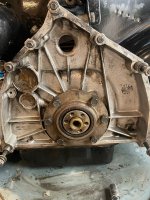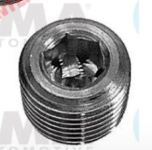Luke W
Member
Hi All,
I was wondering if anyone can tell me what these two plugs are for exactly. I took off the clutch plate and flywheel to inspect and clean up the grease and grime behind the flywheel and noticed them. There seems to be some old silicone or some type of sealant that was applied to the area. I was wondering if I need to reapply some new sealant and if so does anyone have any recommendations.
I did not see any significant leaking in that area or the crankshaft seals but there was a fair amount of built up oil and dirt. I don't think the engine was ever rebuilt so I am assuming it is just 50 years of build up since I did not see any real evidence of leaking.
Thanks for any advice,
Luke
I was wondering if anyone can tell me what these two plugs are for exactly. I took off the clutch plate and flywheel to inspect and clean up the grease and grime behind the flywheel and noticed them. There seems to be some old silicone or some type of sealant that was applied to the area. I was wondering if I need to reapply some new sealant and if so does anyone have any recommendations.
I did not see any significant leaking in that area or the crankshaft seals but there was a fair amount of built up oil and dirt. I don't think the engine was ever rebuilt so I am assuming it is just 50 years of build up since I did not see any real evidence of leaking.
Thanks for any advice,
Luke




